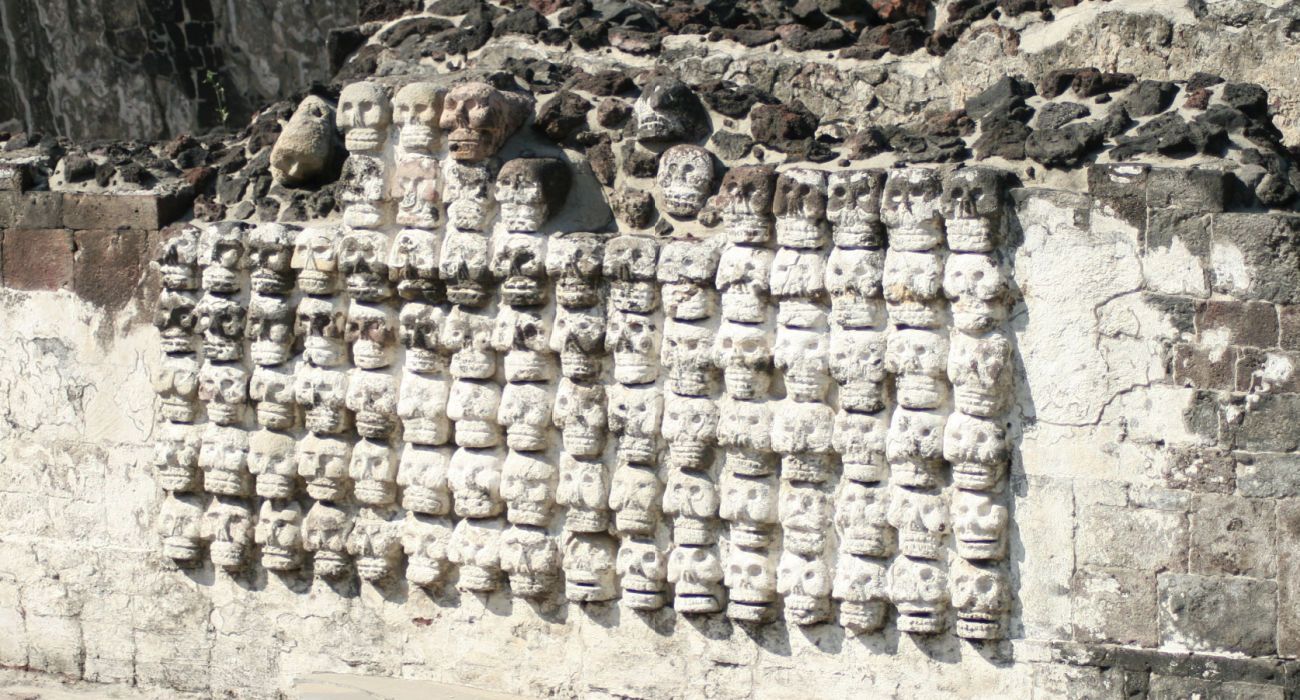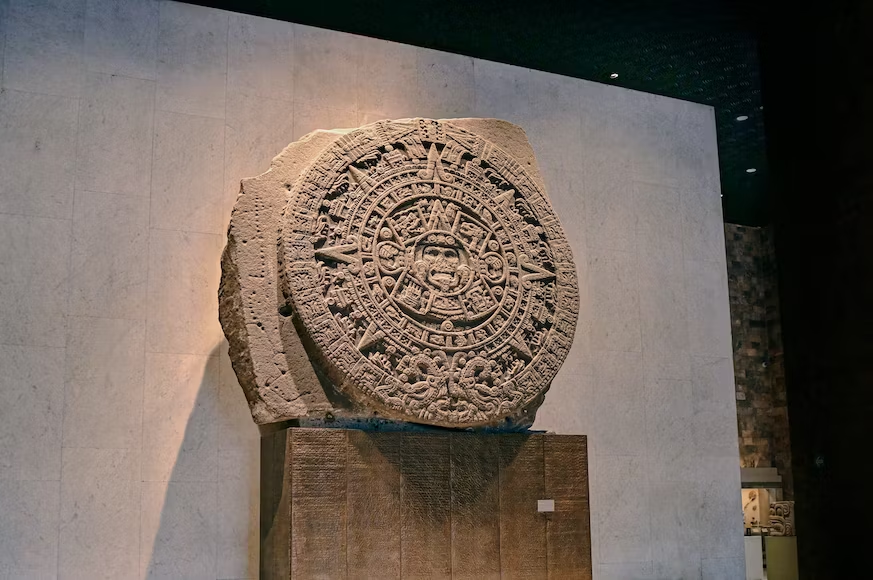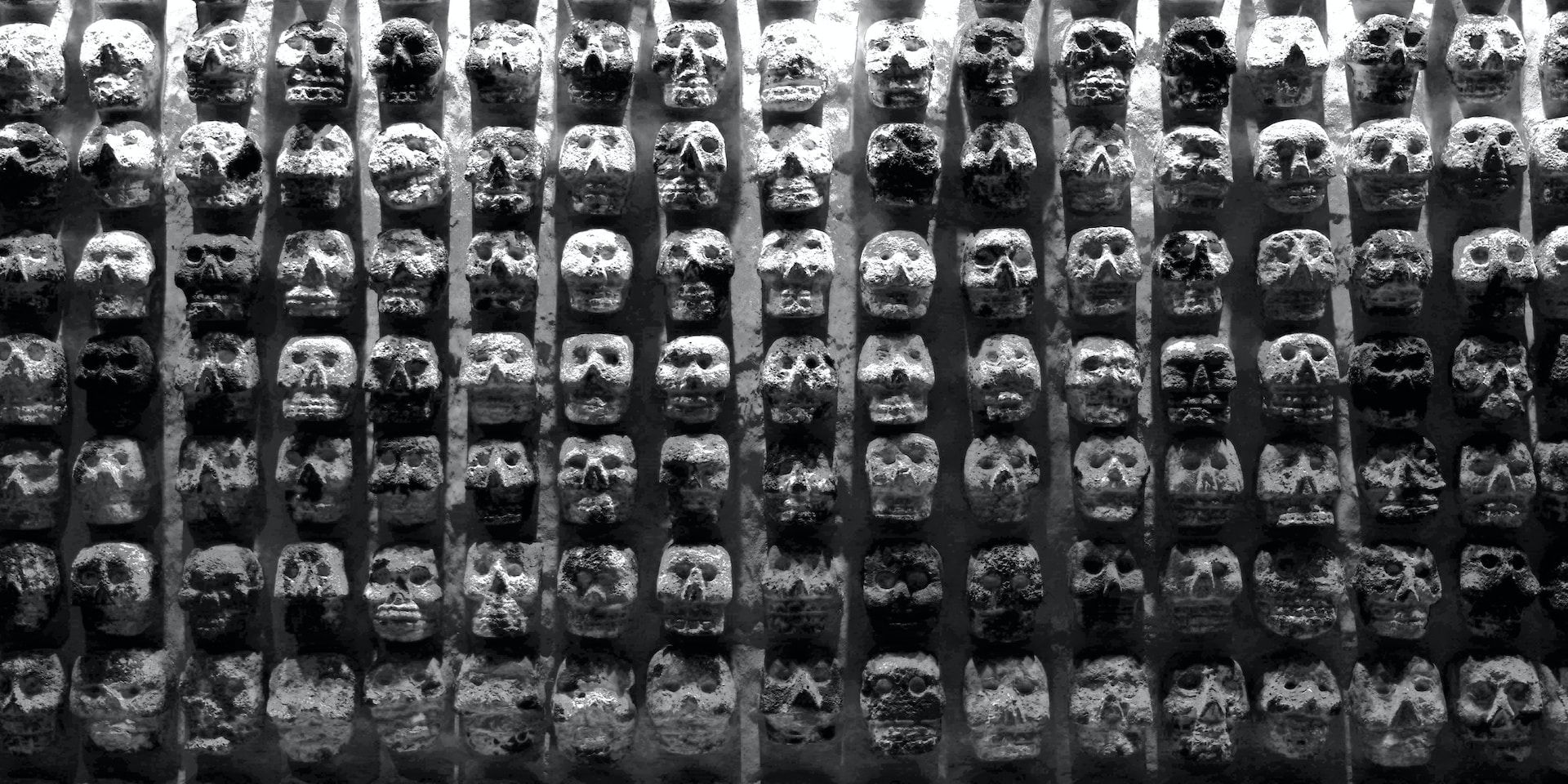Quick Links
Tenochtitlan was once one of the largest cities in the Americas and may have had a population in excess of 200,000. It was the dominant city of the Triple Alliance that formed the powerful and war-like Aztec Empire. But the arrival of the Spanish and its fall to the Spanish conquistadors in 1521 brought their world to a crashing halt.
The Spanish soon set about destroying and dismantling the old Aztec capital - along with their temple-pyramid, the Templo Mayor. They then built their own city, Mexico City, over it. So much about the old Aztec capital has been lost, but new discoveries are being made all the time. One of the more grizzly discoveries has unearthed an Aztec tower of human skulls under Mexico City.
Human Sacrifice Was An Important Part Of Mesoamerican Religion
It is well known that human sacrifice was an important part of the Aztec belief system. Many people were sacrificed throughout ancient Mesoamerica. It is believed to have been practiced since at least the time of the ancient Olmecs of 1200 to 400 BC.
When the Spanish arrived in Tenochtitlan in 1521, they were taken aback by the grizzly ceremonies before them. They watched on as Aztec priests used razor-sharp obsidian blades to slice into their sacrificial victims and rip out their still-beating hearts to the gods. The lifeless bodies were then carelessly tossed down the steps of the towering Templo Mayor.
The conquistadors described towers around the Templo Mayor made up entirely of human skulls, with wooden racks displaying more human skulls between them. These eerily tales were dismissed by later historians as the Spanish looked down on the Aztecs and sought to demonize them. The stories were thought to have been made up or embellished. It was thought to have been wildly exaggerated propaganda to justify overthrowing the Aztec Empire and razing its monuments to the ground - but now no more. It is now known that for the Aztecs human sacrifice was almost a part of everyday life.
The Mayans often involved the sacred cenotes in human sacrifices - like the Sacred Cenote at Chichen Itza. It is not fully understood how human sacrifice was a part of the ancient Mayan ball game. Sometimes human sacrifice was considered an honor, while often it was the vanquished in war who were sacrificed (forget about the Geneva Convention).
What To Know About The Discovery Of A Tower Of Human Skulls At Templo Mayor
One key detail of the Spanish account has now collaborated archeologically during excavations at Templo Mayor (also called the Great Pyramid of Tenochtitlan) in 2020. In 2020, archeologists found 119 more human skulls at the Hueyi Tzompantli zone of Templo Mayor, bringing the number found to over 600. This is just one more discovery in a series of discoveries since the 1970s.
The very skull towers and Aztec skull racks that the conquistadors shockingly recorded have now been unearthed and discovered. The Aztec tower of human skulls dates back to the 1400s and includes skulls of men, women, and children. It seems that the tower was constructed in three phases between 1486 and 1502. It surprised researchers as they thought they would find only skulls of young defeated male warriors - not women and children. It is also thought that this skull pyramid is just one of the seven that once stood there.
Note that sculptures of human skulls at Templo Mayor are pictured here - not the pyramid and racks of real human skulls recently discovered.
Aztec Skull Tower:
- First Discovered: 2017
- Size: 5 meters or 16.4 feet in diameter
It should be noted that the Spanish still inflated their figures (e.g., they claimed 80,400 men, women, and children were sacrificed at Templo Mayor under one Aztec Emperor). But the overall stories of human sacrifice and staking the skulls seem to be true.
Visiting The Templo Mayor Archeological Site
Everyone should visit the ruins of Templo Mayor - the Great Pyramid of Tenochtitlan. Today, it is an archeological site in the heart of Mexico City and is open to the public.
- Address: 8 Semiario St., Downtown, Cuauhtemoc, Mexico City
- Visiting Hours: 9.00 am to 5.00 pm Tuesday to Sunday
- Closed: Mondays
- Entry Fee: 90 Mexican Pesos
The admission ticket includes access to both the archeological site and the museum (the museum was opened in 1987 to exhibit archeological finds of the old pyramid). Visiting these sites is a great way to discover the history and life (good and hair-raising) in Mesoamerica before the arrival of the Spanish.
Not all of the Aztec discoveries are morbid reminders of human sacrifice. One of the more note able discoveries made about the Aztecs in Mexico City is the Aztec Sun Stone now on display.





